Typing function formulas manually in Excel can be error-prone and requires you to remember the exact syntax for each function. The Insert Function Wizard in Microsoft Excel simplifies this process by offering a list of predefined functions and guiding you step-by-step through the formula creation. This tool is invaluable when you're uncertain about which function to use or how to properly construct it.
Creating a formula in Excel using the Insert Function Wizard
An Excel function is a predefined formula that performs specific calculations using values in cells or ranges. The Insert Function Wizard allows you to access all of Excel's built-in functions, making it easier to construct formulas without memorizing syntax.
Step 1: Select the cell where you want the result of the function to appear.
Step 2: Open the Function Wizard by clicking on the 'Insert Function' option in the 'Function Library' group under the 'Formulas' tab. Alternatively, click the fx button located on the left side of the formula bar.
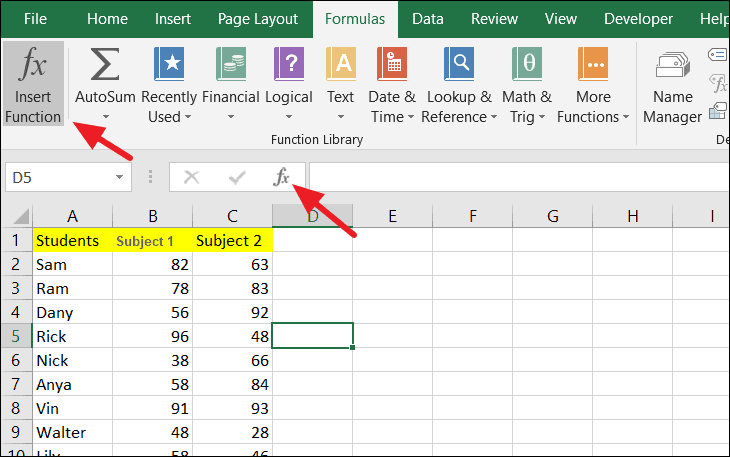
You can also choose a function directly from the categories available in the 'Function Library' section under the 'Formulas' tab.
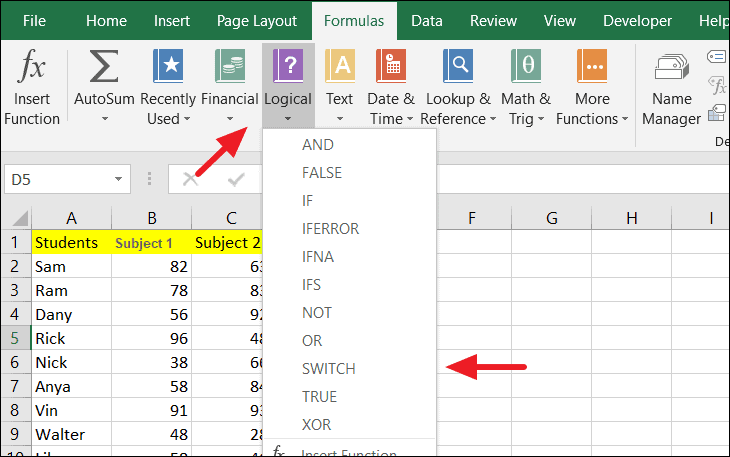
Alternatively, type an equal sign (=) in the selected cell, and then click the drop-down arrow next to the Name box (to the left of the formula bar) to select a function from the list of recently used functions.
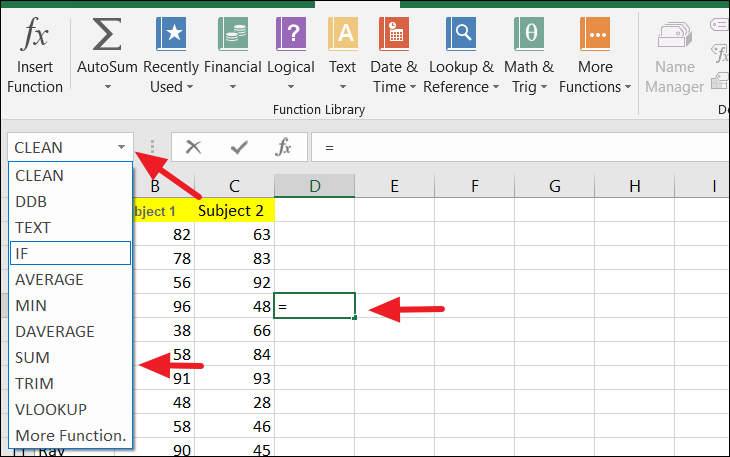
This list displays the ten most recently used functions for quick access.
Inserting an Excel function
The structure of an Excel function starts with an equal sign (=), followed by the function name, and then the arguments enclosed in parentheses.
When the Insert Function dialog box appears, you have several ways to find and insert the function you need.
Method 1: If you know the name of the function you want to use, type it into the 'Search for a function' field and click 'Go'.

Method 2: If you're unsure of the function name, type a brief description of what you want to accomplish into the 'Search for a function' field and click 'Go'. For example, enter 'remove space' to find functions related to removing extra spaces from text, or 'current date and time' to find functions that return the current date and time.
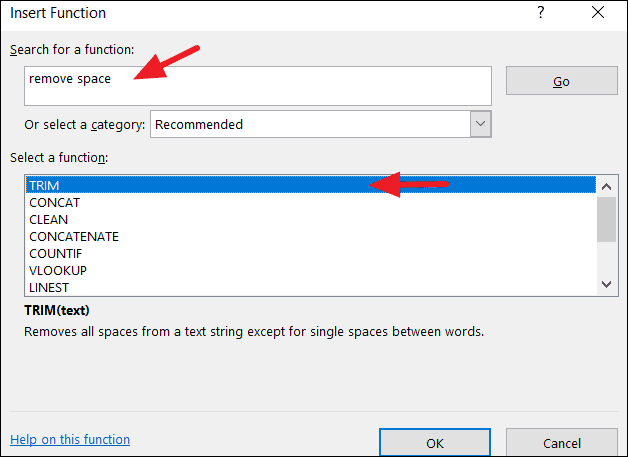
The wizard will display a list of functions that closely match your description. Selecting a function will show a brief description of what it does below the 'Select a function' box.
Method 3: If you know the category of the function, select it from the 'Or select a category' drop-down menu. All functions in that category will be listed in the 'Select a function' box.

To learn more about a specific function, click on the 'Help on this function' link in the bottom-left corner of the dialog box. This will open a detailed explanation of the function's syntax and usage in Excel's Help system or online support page.
After finding the appropriate function for your needs, select it and click 'OK' to proceed.
Specifying the arguments
Function arguments are the values that a function uses to perform calculations. They can include numbers, text, logical values, cell references, or even other functions. The Function Arguments dialog box will appear after you select a function.
Step 1: In the Function Arguments dialog box, enter the required arguments for the function. You can type cell references or values directly into the argument fields.
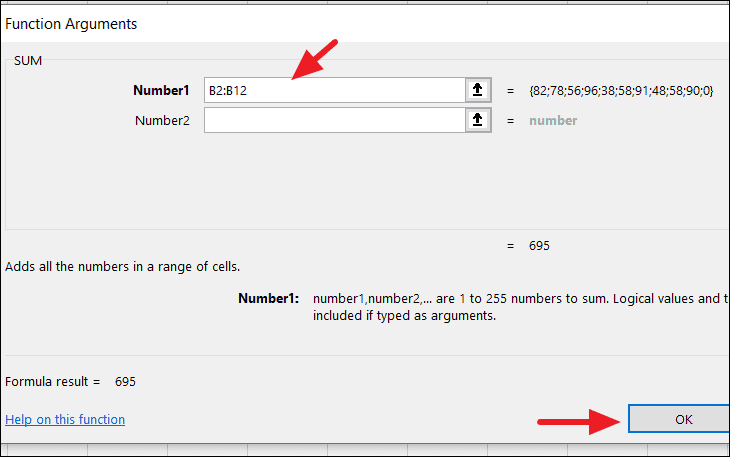
Step 2: Alternatively, click in an argument field and then select the relevant cell or range directly on the worksheet. Excel will automatically insert the cell references into the argument field.
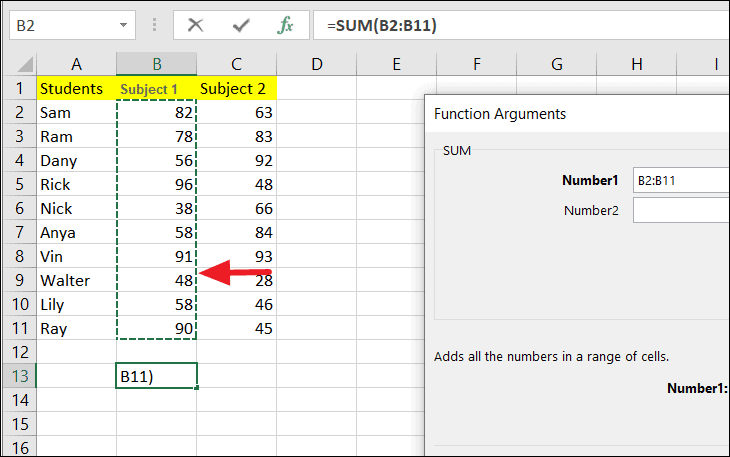
After entering all necessary arguments, click 'OK' to insert the function into the selected cell. The result of the function will be displayed in the cell, and the complete formula will be visible in the formula bar.

By using the Insert Function Wizard in Excel, you can efficiently build formulas without memorizing complex syntax, reducing errors and improving productivity.

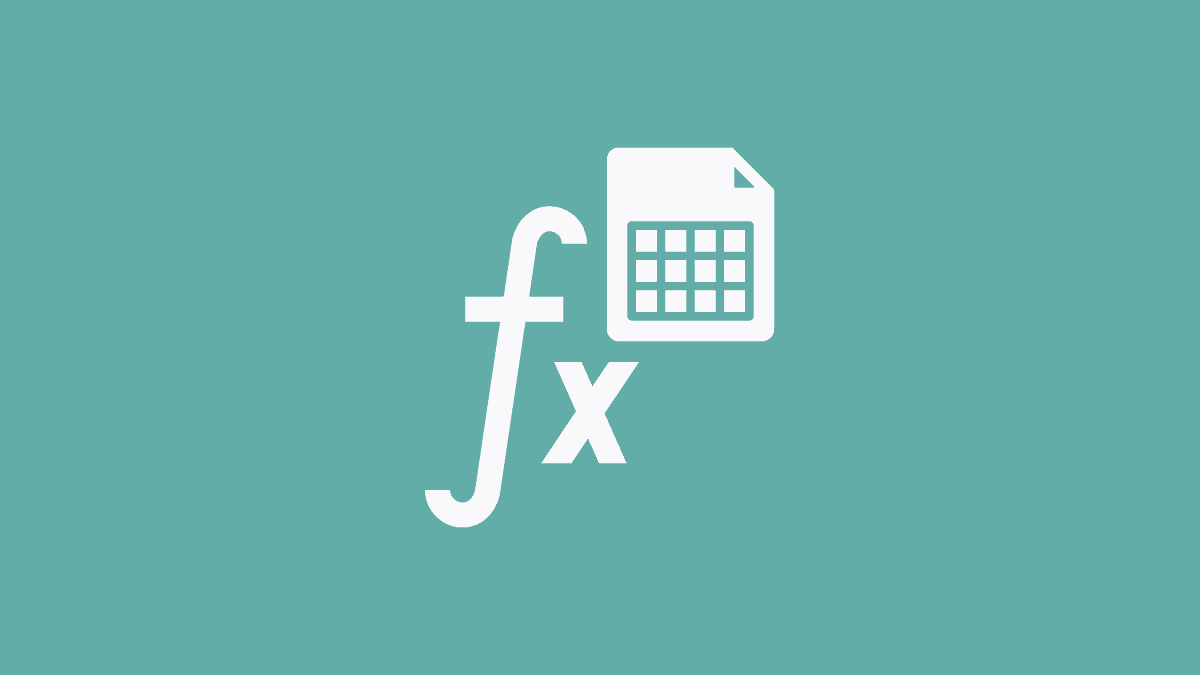









Member discussion